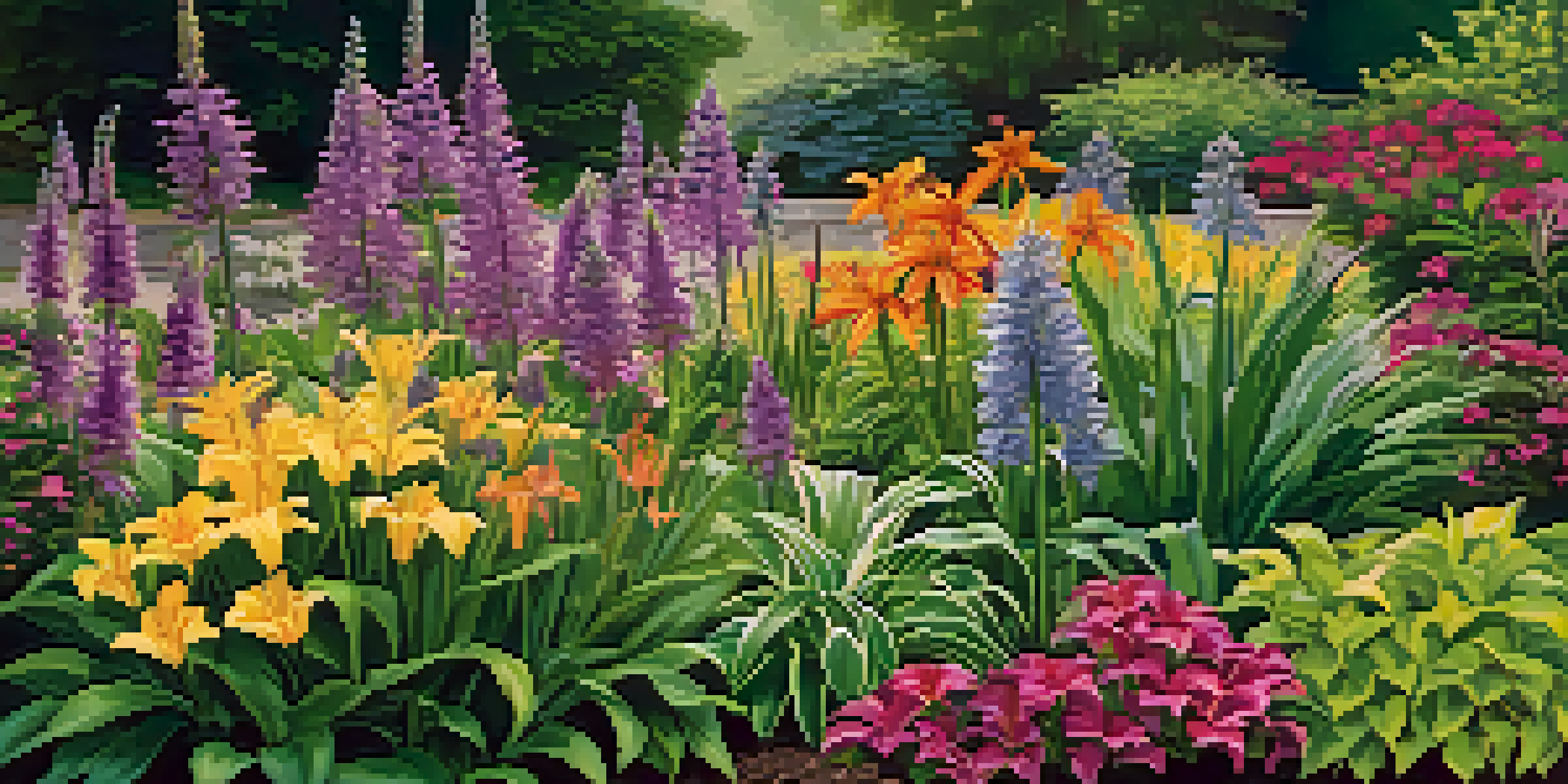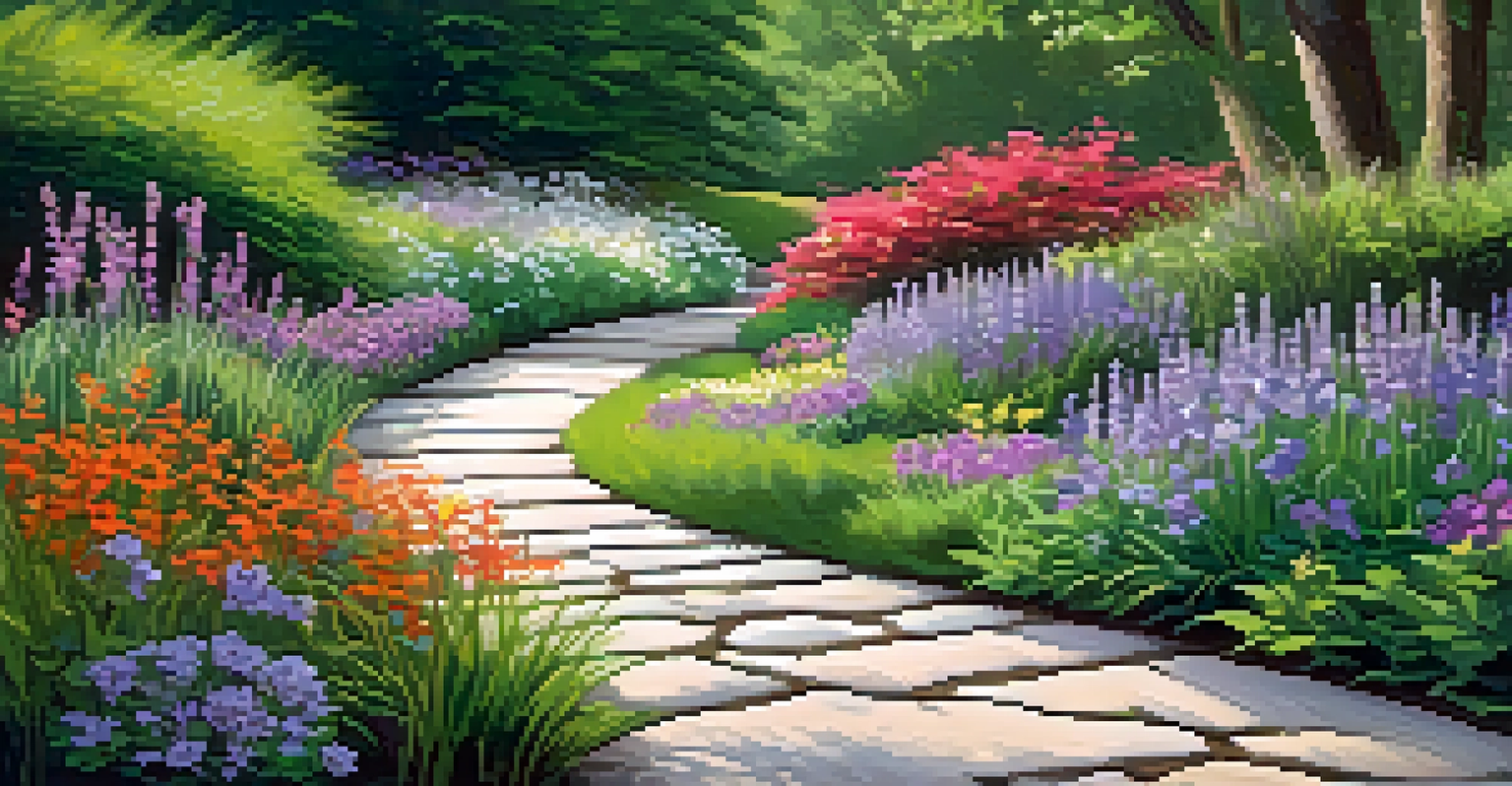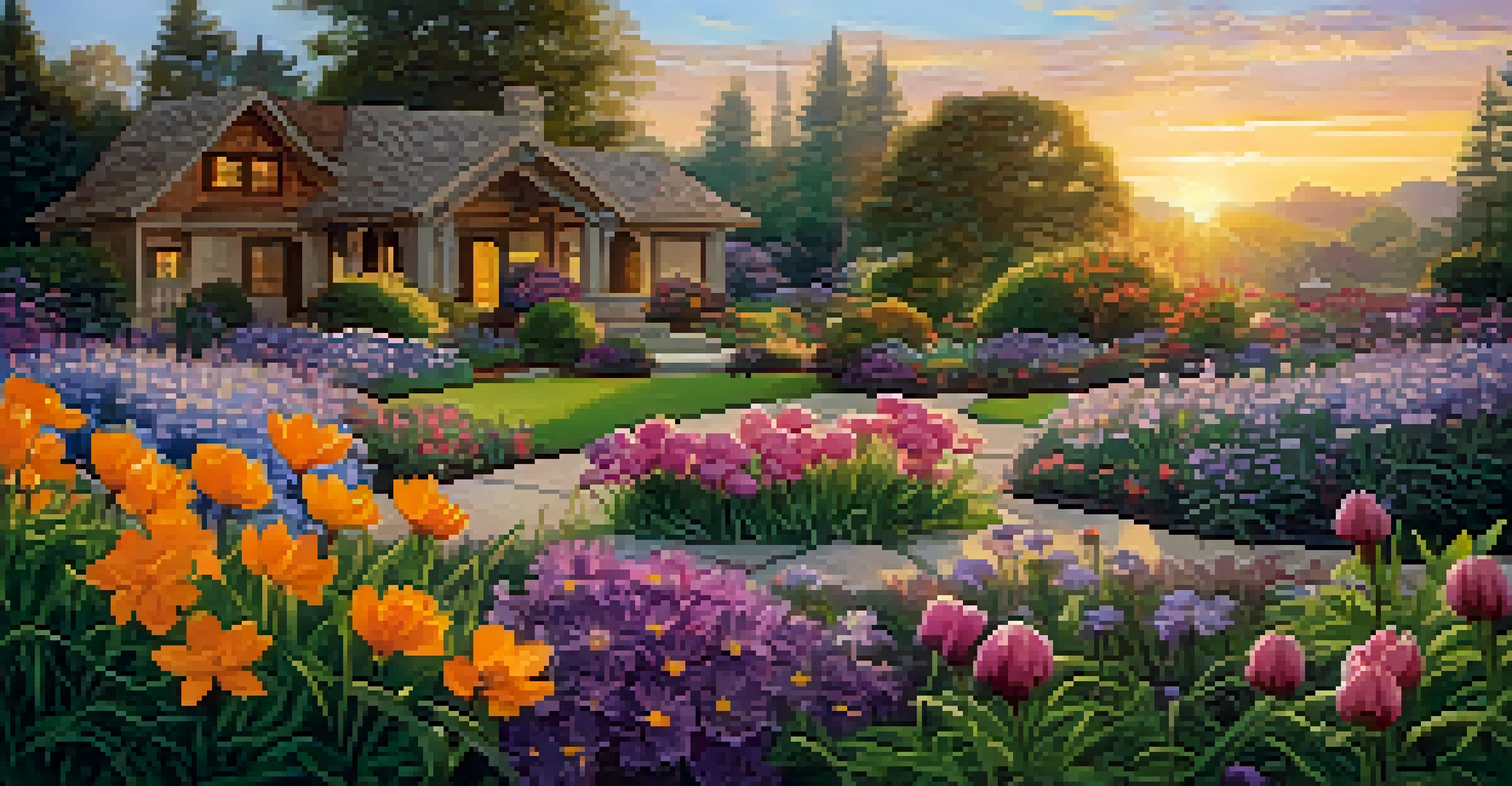How to Choose the Right Perennial Plants for Your Garden

Understanding Perennial Plants and Their Benefits
Perennial plants are those that live for more than two years, returning each season without needing to be replanted. This resilience makes them a favorite among gardeners who want a low-maintenance garden that thrives year after year.
Gardening is a way of showing that you believe in tomorrow.
One of the biggest benefits of perennials is their ability to establish deep root systems, which helps them survive tough weather conditions. This means less watering and less worry about plant survival during dry spells.
Additionally, perennials often enhance the beauty of your garden with their vibrant colors and varying heights. They can create a dynamic landscape that changes through the seasons, providing visual interest and enjoyment.
Assessing Your Garden's Conditions
Before selecting perennial plants, take a close look at your garden's specific conditions. Factors such as sunlight, soil type, and moisture levels can greatly influence which plants will thrive in your space.

For example, if your garden receives full sun, you might want to consider sun-loving perennials like coneflowers or daylilies. Conversely, shady areas are perfect homes for hostas and ferns, which prefer lower light.
Perennials: Low-Maintenance Beauty
Perennial plants thrive year after year, offering a vibrant and resilient option for gardeners seeking minimal upkeep.
Understanding your garden's conditions will help you narrow down your choices and ensure that the plants you select will flourish in their environment.
Choosing the Right Color Palette for Your Garden
Color plays a crucial role in garden design, influencing mood and creating visual harmony. When choosing perennial plants, think about the color palette you want to achieve, whether it’s bold and vibrant or soft and subtle.
To plant a garden is to believe in tomorrow.
For example, if you want to create a calming space, consider soft blues and whites with plants like lavender or white phlox. On the other hand, if you’re looking for a lively atmosphere, you might opt for bright reds and yellows with plants like black-eyed Susans.
By thoughtfully selecting colors, you can create a cohesive garden that reflects your personal style and enhances your outdoor experience.
Considering Bloom Times for Continuous Color
One of the joys of gardening with perennials is the ability to enjoy blooms throughout the growing season. To achieve this, consider the bloom times of different plants and how they overlap.
For instance, early bloomers like crocuses and peonies can kick off the season, followed by mid-summer favorites like echinacea. Late bloomers such as asters can provide color well into fall.
Choose Plants for Your Garden's Conditions
Assessing factors like sunlight and soil type ensures that you select perennial plants that will flourish in your specific garden environment.
By planning for a staggered bloom time, you can ensure your garden is always bursting with color, keeping your outdoor space lively all year long.
Selecting Plants Based on Maintenance Level
Different perennial plants come with varying levels of maintenance, so it’s essential to choose those that fit your gardening style and lifestyle. Some perennials require regular deadheading, pruning, or dividing, while others are more carefree.
For example, plants like sedum and Russian sage are known for their low maintenance needs, making them ideal for busy gardeners. In contrast, roses, while stunning, often need more attention and care.
By selecting plants that align with the time and effort you can dedicate, you’ll create a garden that remains beautiful without overwhelming your schedule.
Attracting Wildlife with Your Plant Choices
Creating a garden that attracts wildlife can enhance your gardening experience and support local ecosystems. Many perennial plants are excellent choices for attracting butterflies, bees, and even birds.
For instance, plants like milkweed are crucial for monarch butterflies, while bee balm can draw in various pollinators. Incorporating these plants not only beautifies your garden but also contributes to the health of the environment.
Plan for Color and Seasonal Interest
By choosing perennials with staggered bloom times and diverse seasonal features, you can create a visually appealing garden year-round.
By selecting perennials that attract wildlife, you can enjoy the added benefit of watching nature thrive in your garden.
Planning for Seasonal Changes and Longevity
When choosing perennial plants, it's important to consider how they will look throughout the seasons. Some plants may bloom beautifully in one season but look bare or unappealing in others.
Opting for a mix of perennials that provide interest in different seasons helps maintain a visually appealing garden year-round. For example, ornamental grasses can add texture in the winter while flowering plants bring color in summer.

Thinking ahead about seasonal changes will not only enhance your garden's aesthetics but also ensure that it remains a source of joy throughout the year.